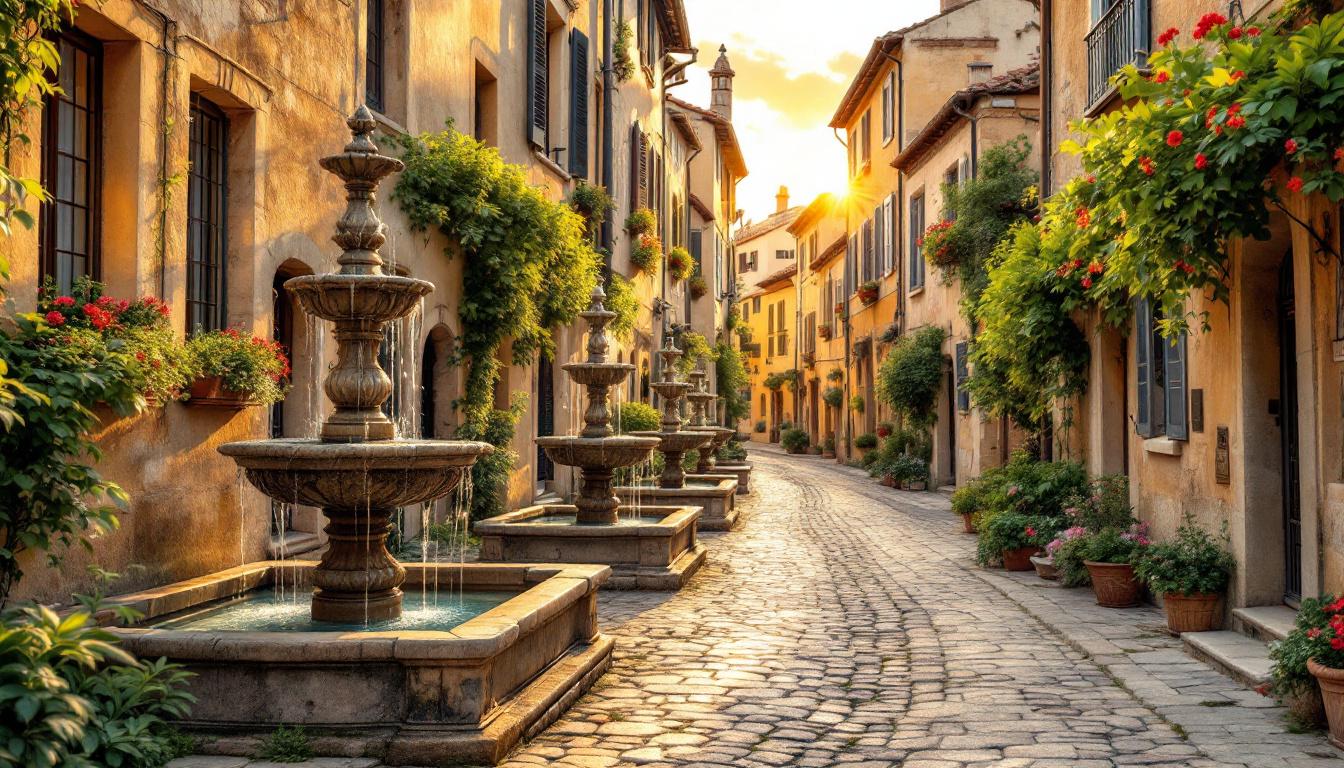Barjols: The French Village Where 43 Fountains Flow Through Medieval Streets
A symphony of water in the heart of Provence
In the sun-drenched hills of Provence, where lavender fields and olive groves typically steal the spotlight, the village of Barjols performs a different kind of magic. This extraordinary settlement in the Var department has earned the nickname “Tivoli of Provence” thanks to its remarkable collection of 43 fountains, washhouses, and waterfalls that create a mesmerizing aquatic soundtrack throughout its ancient streets.
“Our village breathes through its waters,” explains Marie, a lifelong resident whose family has maintained one of the village’s historic washhouses for generations. “When you walk through Barjols, you’re never more than a few steps from the sound of flowing water.”
Where medieval heritage meets liquid gold
Barjols sits at the edge of Verdon National Park in the heart of “Provence Verte” (Green Provence), an area celebrated for its lush landscapes and preserved natural beauty. The village’s remarkable water features aren’t just decorative – they tell the story of a civilization built around the precious resource locals call “liquid gold.”
The centerpiece of Barjols’ architectural heritage is the Collegiate Church of Notre Dame de l’Assomption, an impressive structure dating back to the 11th century with additions from the 13th and 16th centuries. Its weathered stone facade stands in stark contrast to the perpetual movement of the village’s waterways.
The Circuit des Fontaines: a journey through living history
The most authentic way to experience Barjols is through its “Circuit des Fontaines,” a walking trail that guides visitors through the village’s remarkable collection of water features. Each fountain tells its own story – some ornately carved with mythological figures, others simple stone basins where generations of villagers have gathered their water.
What makes this experience special is that these aren’t mere tourist attractions. The fountains and washhouses of Barjols remain functional parts of village life, with some locals still practicing traditional “bugades” (community laundry gatherings) that have nearly disappeared elsewhere in France.
A landscape beckoning exploration
Beyond the village center, Barjols offers gateway access to some of Provence’s most spectacular natural wonders. Hiking and mountain biking trails wind through the surrounding countryside, ideal for those seeking active exploration similar to other hidden French villages with natural attractions.
The mysterious Vallon des Carmes, with its cave monastery remains, offers a spiritual dimension to outdoor adventures. Meanwhile, the nearby Gorges du Verdon (about 35 km away) presents one of Europe’s most dramatic landscapes – often compared to Vietnam’s famous limestone formations but with a distinctly Mediterranean character.
Authentic tastes of Provence
No visit to Barjols would be complete without sampling the regional cuisine that makes Provence a gastronomic destination. Local markets showcase products like tapenade, ratatouille, and regional sweets, while small restaurants serve bouillabaisse and other Mediterranean specialties.
Unlike rapidly modernizing destinations, Barjols maintains its traditional rhythms and authentic character, offering visitors a genuine slice of Provençal life.
Spiritual connections
The religious heritage of Barjols shares similarities with sacred sites that balance tourism with authentic traditions. While the Collegiate Church anchors the village spiritually, visitors often discover unexpected religious artwork throughout Barjols, reminiscent of medieval French villages with hidden ecclesiastical treasures.
“The water and stone of Barjols have witnessed centuries of prayers and celebrations,” notes local historian Jean Moreau. “Our fountains aren’t just practical – they’re sacred spaces where community is renewed daily.”
When to visit
Spring (April-June) and early autumn (September-October) offer ideal conditions for exploring Barjols, with comfortable temperatures and optimal light for photography. The village provides a refreshing escape during summer months when coastal areas become overcrowded with tourists.
Barjols reminds us that the most extraordinary destinations aren’t always found on postcards or Instagram feeds. In this remarkable village, where water shapes both the landscape and daily life, visitors discover that true Provence isn’t just lavender and sunflowers – it’s the music of fountains echoing through medieval streets and the enduring connection between people and their precious “liquid gold.”
